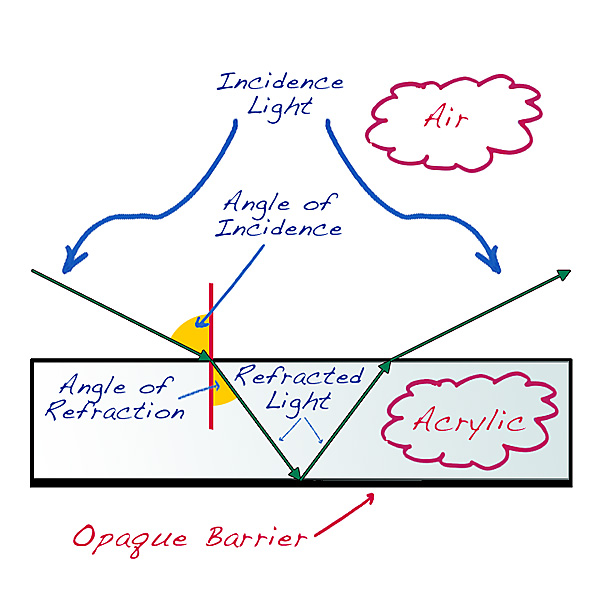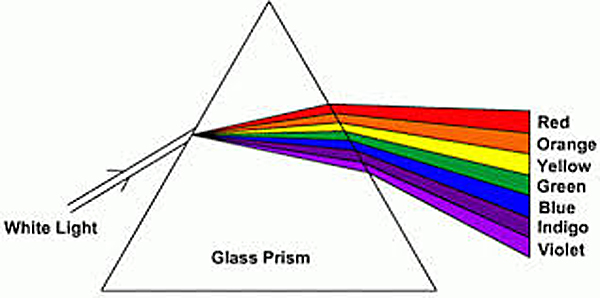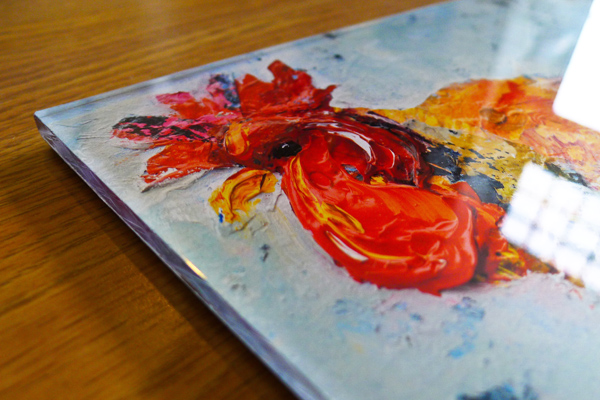The Physics of the Acrylic Print

Acrylic
Prints have unique optical properties because of the
underlying physics of visible light traveling through
the acrylic layer.
A property of visible light (or white light) is that
the light waves are slightly bent as the light passes
from one medium (air) to another medium (in the above
example; water). This bending of the light is called
light refraction.
Light refraction has two impacts on the observed
image:
1) Because of the bent light, the observed object
appears slightly magnified, which gives the image
added clarity. Light refraction is the underlying
principle of optical lens technology you would find
in a camera or a microscope.
2) The bent light will also experience a slight shift
in the visible light spectrum, which adds vibrancy to
the observed colors (explained below the prism
image).

A
simplified example of what is happening with the
Acrylic Print can be see above.
Incident light (the ambient light all around us) is
slightly bent as it enterers the acrylic layer.
The altered and shortened light path continues to
travel until the opaque barrier on the backside
reflects the light back up and out the acrylic layer.
The light is bent once again and travels to the eye
of the observer.
Because the light is traveling a miniscule shorter
distance, the image has a miniscule amount of
magnification. This is why the pencils in the
water appear slightly larger.
This slight magnification provides an enhanced
clarity to the image, which is subconciously
perceptible to the human eye.
It essence, the acrylic layer is behaving like a
lens.
This example also points out the importance of the
opaque barrier. If light is allowed to 'leak' out
through the back of the print, the clarity impact is
lost because the light is not reflected back to the
eye.

A
profile view of the Acrylic Print points out how the
construction of the Acrylic Print both traps light
within the acrylic layer and reflects light back to
the observer.

Another
consequence of bending the light is a slight shift of
the visible color spectrum.
Every
time the light is bent, the ultraviolet (UV) portion
of the light spectrum becomes slightly more dominant
and the infrared (IR) portion of the light spectrum
becomes less dominant.
IR
light has a longer wavelength than UV light and UV
light has more energy. When white light is
bent, the UV portion of the light spectrum is more
impacted.
Human
eyes are especially sensitive to the UV portion of
the white light spectrum and colors under a
UV-dominant spectrum appear to be especially vibrant.
This
is exactly why diamonds have a sense of luster. The
light is bent multiple times within the diamond and
the the spectrum shift becomes even more exaggerated
and pronounced each time it is
bent.

The
net result of the these two principles of light is an
Acrylic Print image that has both exceptional clarity
and luminance.
It
is really striking to see
firsthand.
